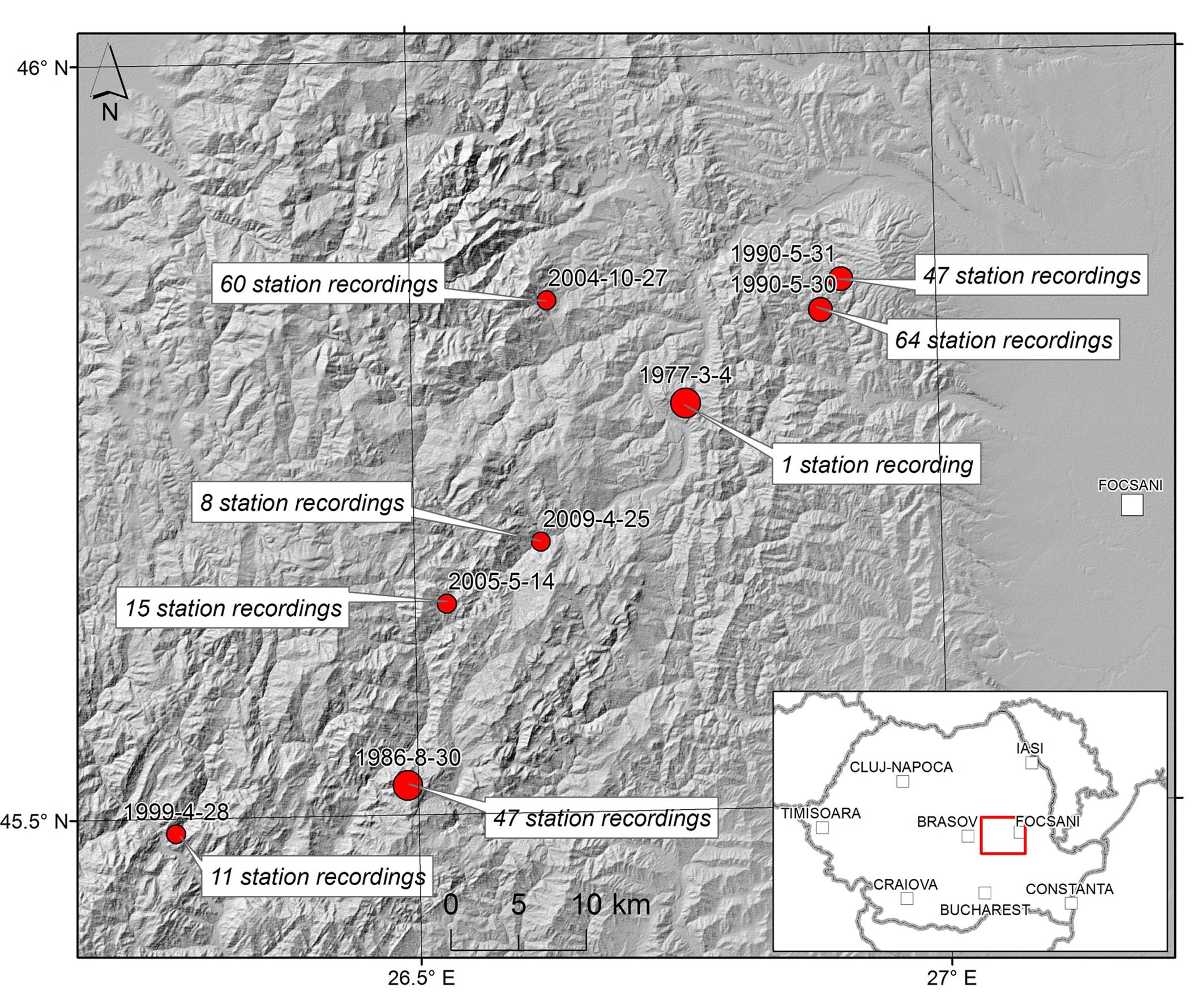RESULTS
Bigsees Selection of Earthquakes
Within the project, a Romanian regionally-representative selection of earthquakes was compiled; it consists of earthquakes with moment-magnitude (Mw) ≥ 2.8 that occurred in the 984 - 2016 (august) period (especially after 1977, smaller magnitude earthquakes started to be recorded). The Bigsees Selection of Earthquakes can be seen, filtered and downloaded in CSV format (2000 rows limit) from the embeded webgis application above, or from the application on the ESRI platform (click here). The Selection has been compiled by using the following sources: The Romplus National Catalogue, the SHEEC Catalogues obtained within the SHARE Project, the Catalogue of the Dacea Project and the up-to-date list of earthquakes from CSEM-EMSC. There are also represented the seismic sources defined within the project. All data was used in revising the seismic hazard of Romania.
Geological Database
This map (available also here) presents the locations of the boreholes included in the Bigsees Geological Database, allowing users to check the availability of data. By clicking on each point, information regarding the availability of Vp, Vs, Density or Lithologic composition are shown, together with description of the borehole, depth, thickness and number of strata. For complete information and values send a request with the ID of the borehole and purpose of usage to contact@infp.ro. Within this database there is also available a list of 55 unique types of materials (such as clay, sand, loess, marl) with density, G and D values.
Waveform Database
A database consisting of processed seismic recordings for earthquakes with moment-magnitude (Mw) ≥ 5 in the Vrancea Seismic Source was developed within the project. PGA, PGV and other parameters are available for the earthquakes presented in the map above. You can request data by email, at contact@infp.ro.
Other results
The Bigsees Project brought together multidisciplinary specialists - in the fields of seismology, earthquake engineering, constructions, GIS & others, and greatly contributed to the improvement of the Romanian Seismic Design Code (P100). The created databases, developed as a joint institutional effort, allow for a better understanding of the seismic hazard of Romania and aid in the mitigation efforts. One of the important results of the project is also the number of publications in top international journals in the fields of study, reflecting the quality and complexity of the research.

